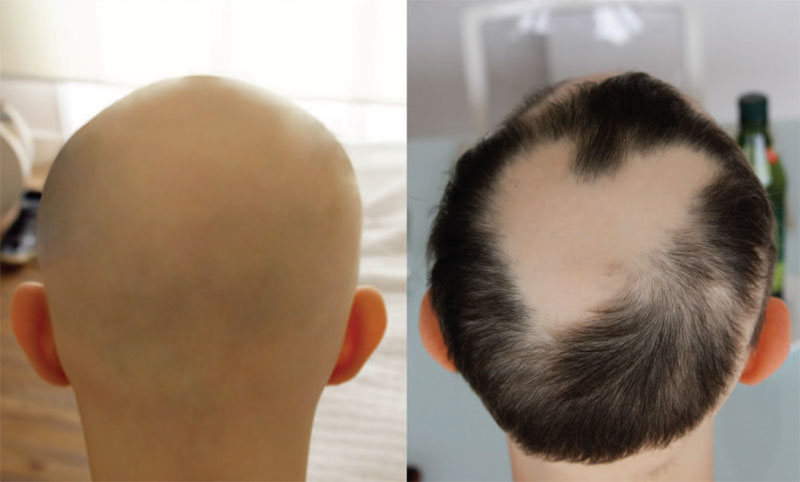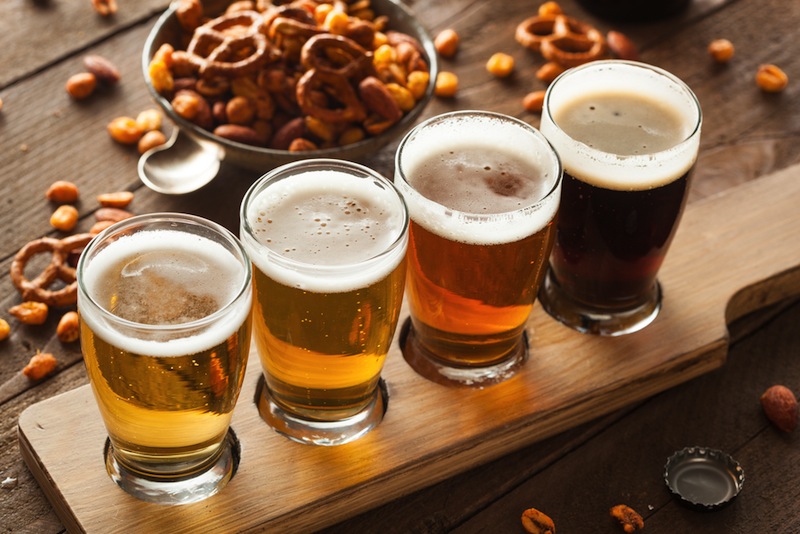Surreal Science: 9 Strange Health Findings from 2016
Surreal Science: 9 Strange Health Findings from 2016

Science is weird – and a number of new findings during 2016 proved it. From the superpowers that alcohol may give you, to the weird health risks associated with longer legs, this year has brought us some scientific studies whose conclusions were strange, funny and thought-provoking.
Here are nine of the strangest health stories we covered in 2016.
Leprosy found in red squirrels

A medieval plague in modern squirrels? Yes, said a study published in Science in November. Researchers found that all 25 red squirrels they collected from England's Brownsea Island were infected with the bacterium Mycobacterium leprae. M. leprae is the oldest pathogen associated with leprosy, and was responsible for outbreaks of the disease in medieval Europe.
"The main message of this is that the number of nonhuman reservoirs of leprosy might be much higher than previously thought," Charlotte Avanzi, a doctoral assistant in molecular life sciences at the Swiss Federal Institute of Technology in Lausanne, told Live Science. Previously, the only known animal reservoir of the bacteria was the nine-banded armadillo, which is found in North, Central and South America, including parts of the southern U.S.
The good news is that the likelihood of people catching the disease from red squirrels is low, researchers said. [6 Strange Facts About Leprosy]
Arthritis drug may help reverse hair loss

In November, researchers reported that two patients, one man and one woman, regrew at least some of their hair after taking a drug aimed at treating arthritis. The patients had a condition called alopecia universalis, in which people's immune system attacks their hair follicles, leading to hair loss on the entire body. But after taking the arthritis drug tofacitinib, they regrew hair on their scalp, eyebrows and in their armpits.
However, the drug has side effects. The long-term use of tofacitinib is known to cause an increased risk of serious infections, as well as tears in the stomach and intestines, according to Pfizer, the company that makes the drug.
Get the world’s most fascinating discoveries delivered straight to your inbox.
Still, the new finding offers hope for patients. "Hair loss really affects your self-esteem," Dr. Doris Day, a dermatologist at Lenox Hill Hospital in New York, who was not affiliated with the study, told Live Science in November. By studying how tofacitinib works, researchers may better able to understand what goes wrong when people experience hair loss, and then be able to develop new treatments with fewer side effects.
Long legs? You may have a higher risk of colon cancer

There may be a surprising drawback to having fashion-model-length legs: A study presented in April found that, compared with men who had shorter legs, men with longer legs had a 42 percent higher risk of developing colorectal cancer.
Researchers used data from the Atherosclerosis Risk in Communities Study, which included a cohort of more than 14,500 men and women, analyzing overall height, torso height and leg length. They examined how many participants developed colorectal cancer over a nearly 20-year period, and found that the only factor linked to people's colon cancer risk was leg length. Men with the longest legs (an average of 35.4 inches) had a whopping 91 increased risk of colorectal cancer, compared with the men with the shortest legs (an average of 31.1 inches). In women, no statistically significant differences in risk were linked with leg length, the researchers said. [6 Strange Things the Government Knows About Your Body]
Guillaume Onyeaghala, a graduate student in epidemiology at the University of Minnesota and the lead author of the study, told Live Science that one hypothesis for why they saw these results is that the factors that drive bone growth in the legs are also a risk factor for colorectal cancer.
Drinking a beer could help you read other people's emotions

A study published in September showed one surprising superpower that you may get from your next beer: recognizing emotions such as happiness.
Even though many people drink beer, "there is surprisingly little scientific data on its effects on the processing of emotional social information," study co-author Matthias Liechti, professor of psychopharmacology at the University of Basel in Switzerland, said in a statement.
In the study, 60 participants drank either 17 ounces (500 milliliters) of alcoholic or nonalcoholic beer over the course of 15 minutes. They were not told whether their beer was of the alcoholic or nonalcoholic variety. The results? People who were given regular beer, rather than nonalcoholic beer, were better at recognizing faces that expressed happiness. They also expressed a greater desire to spend time in the company of other people than those who consumed the nonalcoholic beer.
The researchers believe that such results may stem from alcohol’s effects on social cognition, which in turn enhances sociability.
Cardiac arrest is deadlier in a high-rise

Living in the penthouse may make cardiac arrest deadlier: A study published in January found that people who go into cardiac arrest — meaning that their hearts stop beating — while they are on the middle or upper floors of high-rise buildings are less likely to survive than those on the lowest floors. Over the course of the five-year study, conducted in Canada, 4.2 percent of patients who went into cardiac arrest while located below the third floor survived, whereas only 2.6 percent of those on floors 3 and above survived.
And, the higher the floor, the starker the numbers, the researchers said. Less than 1 percent of those above the 16th floor survived, and no one above the 25th floor survived, according to the study.
Dr. Robert A. Silverman, an associate professor of emergency medicine at Hofstra Northwell School of Medicine in Hempstead, New York, who was not associated with the study, told Live Science that the greatest delays in reaching cardiac arrest patients typically occurred in multistory, residential buildings, according to his own research. "Barriers to reaching the patient included the height and complexity of the layout of the building, locked lobby doors and the lack of an escort that could have facilitated movement to the location of the patient," Silverman told Live Science.
The sooner a cardiac arrest patient receives care, the higher the chances of survival, Silverman added.
Higher levels of education linked to higher risk of brain tumors

Do graduate degrees give you brain cancer? Not quite – but a new study from Sweden suggests that people with higher levels of education may be more likely to develop certain types of brain tumors.
The researchers in the study found that women who completed at least three years of university courses were 23 percent more likely to develop a glioma, a type of cancerous brain tumor, compared with women who did not go to a university. In addition, men who completed at least three years of university courses were 19 percent more likely to develop a glioma, compared with men who did not go to a university.
But before you give up on higher education, consider this: Amal Khanolkar, a research associate at the Institute of Child Health at the University College London and a co-author of the study, noted that "one possible explanation is that highly educated people may be more aware of symptoms and seek medical care earlier." In other words, they're more likely to be diagnosed, which may explain the difference found in the study.
Your genes may influence the age at which you lose your virginity

Genetics may play a role in determining the age at which people first have sexual intercourse, according to a study of more than 125,000 people in the United Kingdom that was published in April.
Felix Day, a genetics researcher at the University of Cambridge in the United Kingdom and a co-author of the study, told Live Science that although social factors play a role in when people lose their virginity, "by using genetics, we hope to uncover additional biological factors that contribute" to the age at which people first have sexual intercourse. Researchers looked at 38 genes that affect things like the timing of puberty, tendency to take risks and level of irritability.
The researchers noted that a young age of first sexual intercourse is linked with negative outcomes in educational achievements and mental health. So, by exploring genetic influences, Day told Live Science that researchers hope to better understand the relationship between genes and health outcomes.
Originally published on Live Science.



